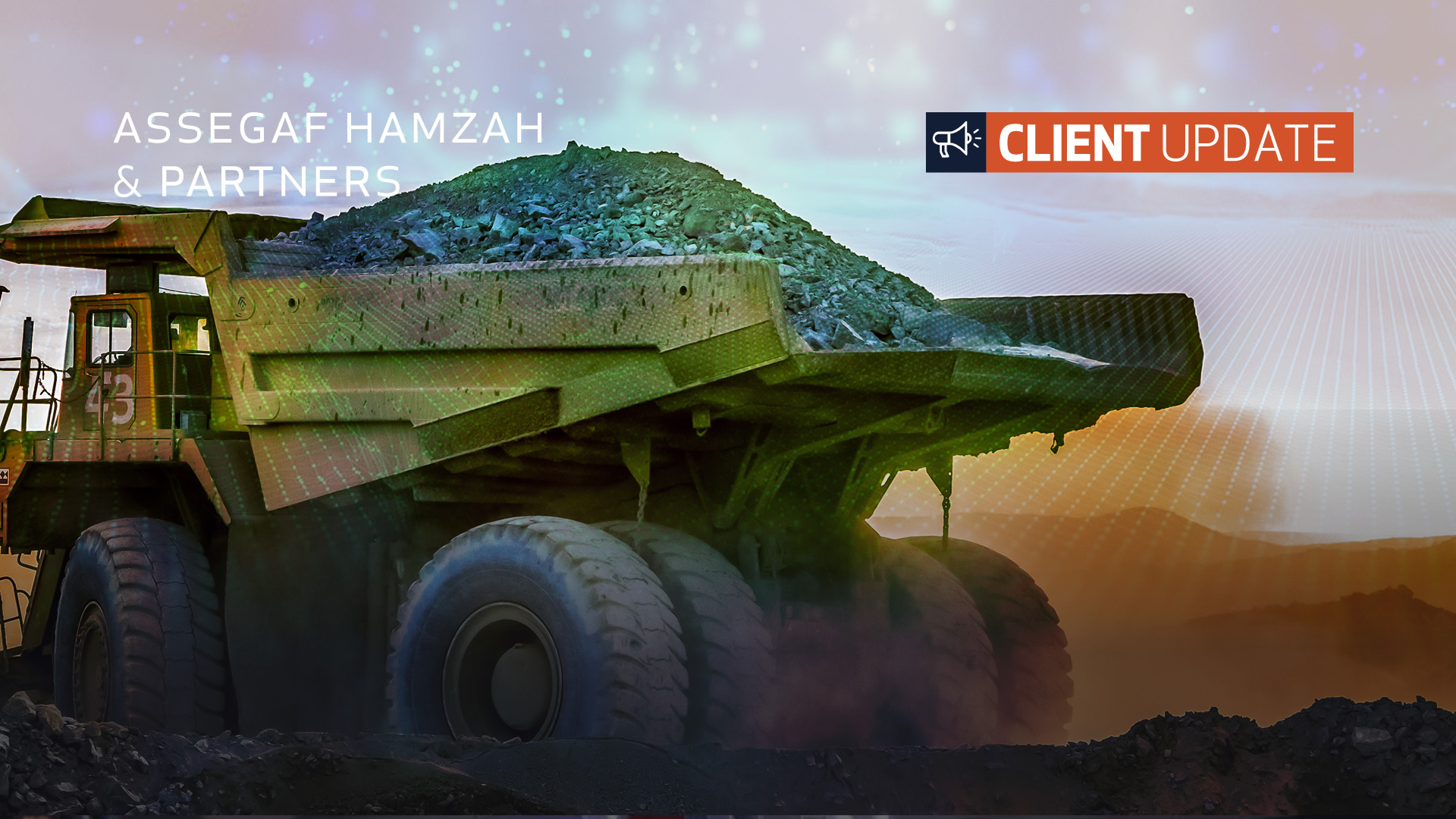Provisions on Duties for Metal Minerals Updated: What to Look Out for

In June 2024, the Minister of Finance (“MOF”) issued an update on the regulation governing export duties through MOF Regulation No. 38 of 2024 on Determination of Exported Goods Subject to Export Duty and Export Duty Rates (“New Regulation”). The New Regulation replaces MOF Regulation No. 39/PMK.010/2022, as lastly amended by MOF Regulation No. 71 of 2023 (“Previous Regulation”).
The two main updates in the New Regulation pertains to the determination of export duties for processed metal mineral products and the extension of the export duties application period for processed metal mineral products. In terms of regulatory framework, the New Regulation supports the implementation of the Ministry of Energy and Mineral Resources (“MEMR”) Regulation No. 6 of 2024, which governs the construction of metal mineral refining facilities in Indonesia (“MEMR Regulation 6/2024”), by detailing the export duties provision for metal mineral products. Moreover, the New Regulation complements MEMR Regulation 6/2024, which allows businesses to export processed metal mineral products using certain HS Codes[1] (Harmonised System) only if their refining facilities have reached the commissioning stage[2] as of 31 May 2024.
We take a closer look at the main updates in the New Regulation below.
Updates to Export Duty Rates and Application Period
The New Regulation changes the provisions for determining export duty rates for processed metal mineral products. Previously, the export duty rates for these products were determined based on the progress (set in percentage) of the development stages in the construction of the relevant refining facilities:
| Stage | Physical Development of Refining Construction |
| I | > 50% – < 70% of development |
| II | > 70% – < 90% of development |
| III | > 90% – 100% of development |
Under the previous regulatory framework, businesses in Stage I would be subject to higher export duty rates compared to businesses in Stage II and Stage III. The closer a business was to the completion of construction, the lower the export duty rates it would enjoy.
Under the New Regulation, the MOF has eliminated the determination of export duty rates based on progress of construction. Instead, one export duty rate will apply to businesses whose refining facilities have reached the commissioning stage. The table below compares the export duty rates for processed metal mineral products under the Previous Regulation against the New Regulation:
| No | Description | HS Code | Export Duty Rate (%) | |||
| Previous Regulation | New Regulation | |||||
| Stage I | Stage II | Stage III | ||||
| 1. | Copper concentrate with a content of ≥ 15% Cu | ex 2603.00.00 | 15 | 10 | 7.5 | 7.5 |
| 2. | Laterite iron concentrate (gutite, hematite, magnetite) with a content of ≥ 50% Fe and a content of (Al2O3+SiO2) ≥ 10% | ex 2601.11.10 ex 2601.11.90 ex 2601.12.10 ex 2601.12.90 | 10 | 7.5 | 5 | 5 |
| 3. | Lead concentrate with a content of ≥ 56% Pb | ex 2607.00.00 | 10 | 7.5 | 5 | 5 |
| 4. | Zinc concentrate with a content of ≥ 51% Zn | ex 2608.00.00 | 10 | 7.5 | 5 | 5 |
Besides changing the rates determination, the New Regulation also changes the period of application of export duties. Under the Previous Regulation, the application of export duties for processed metal mineral products was scheduled to apply until 31 May 2024. The New Regulation extends this deadline to 31 December 2024, but in line with MEMR Regulation 6/2024, the export duties will only apply to businesses that have reached the commissioning stage. As a result, businesses that have not reached the commissioning stage on 31 May 2024 would not be able to use the export duty rates under the New Regulation and are no longer able to export processed metal mineral products.
Key Takeaways
The New Regulation simplifies the application of export duty rates by eliminating the progressive export duty rates pegged to the refining facilities’ development stage. By providing a single export duty rate for processed metal mineral products, the government eliminates the ambiguity in determining the applicable export duty rates for businesses in the commissioning stage.
This streamlined approach not only reduces administrative burden but also ensures a more transparent and predictable regulatory environment for companies. As a result, businesses can better plan their operations and investments, fostering growth and stability in the metal mineral processing industry. Furthermore, this change may encourage more efficient and timely completion of refining facilities, contributing to the overall development of the sector.
If you have any queries on the above, please feel free to contact our team members below who will be happy to assist.
[1] HS Code or the Harmonised System Code is a goods classification system regulated under the Indonesian Customs Tariff Book 2022 (Buku Tarif Kepabeanan Indonesia).
[2] Commissioning is the stage of activities after the refinery facilities have finished construction. In this stage, the readiness, completeness, conformity, and/or the feasibility of the equipment and installations in the facilities are assessed to determine their reliability.
Dealita Tiara Oktaviani also contributed to this alert.


